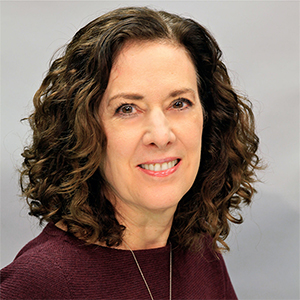Spring 2021
Talent Newsletter
Talent Newsletter
In this issue...Director's Message: Online Learning 2.0 | 9 Takeaways of Thinking Post Covid | Tackling the Digital Divide | The Newest Generation of Online Learners | Made Online, Shaped by Students: A Powerful Community of Learners
Resilience and adaptability were tested this past year. Covid introduced online learning to many more students and teachers, who were challenged to transition to a virtual classroom environment while finding new and creative ways to engage, forge connections, and fight screen fatigue. Educators and parents are to be commended for tackling this challenge with tremendous bravery and rigorous planning. As schools plan for a return to in-person programs, what insights have we gained from a year of online education that can continue to enhance the student experience?
 With a background of offering distance learning programs for over 35 years, and with a service-learning team dedicated to community building and grappling with some of the most pernicious global issues, Center for Talent Development started this past year with a depth of experience from which to draw. As we reflect on a year of online learning, I’m incredibly proud of our staff team for their leadership in furthering the professional development of educators, their dedication to our students, their generosity of spirit in supporting each other, and the innovation and creativity they’ve shown in continually working to build capacity with educators and enhance the learning experience of students. For this issue of Talent, we interviewed several CTD staff members who have shared what they learned about the changing perceptions of virtual learning, issues of equity, and opportunities for leveraging the online experience at a pivotal time.
With a background of offering distance learning programs for over 35 years, and with a service-learning team dedicated to community building and grappling with some of the most pernicious global issues, Center for Talent Development started this past year with a depth of experience from which to draw. As we reflect on a year of online learning, I’m incredibly proud of our staff team for their leadership in furthering the professional development of educators, their dedication to our students, their generosity of spirit in supporting each other, and the innovation and creativity they’ve shown in continually working to build capacity with educators and enhance the learning experience of students. For this issue of Talent, we interviewed several CTD staff members who have shared what they learned about the changing perceptions of virtual learning, issues of equity, and opportunities for leveraging the online experience at a pivotal time.
![]()
Paula Olszewski-Kubilius
The dramatic, worldwide surge in virtual learning in 2020 serves as a watershed moment in the history of online education—one that marks a shift in how students and educators perceive and utilize the virtual space. The focus on screen time, once connoting distraction and opportunity costs, has shifted to what access to a screen might open up for students. This past year, educators and students demonstrated determination while discovering different ways to learn, and many students thrived in online learning environments. While there are many benefits and delights associated with learning face-to-face, how can we honor the innovation and creativity of educators and safeguard advantages experienced by students who have found new ways to click into their learning? In this issue of Talent, Center for Talent Development’s staff team shares lessons and recommendations for opportunities to carry forward.
“Some students find they're better able to focus and make progress when allowed to work independently without classroom distractions.”- Susan Kasper
“Schools have seen how effective online learning can be,” notes Susan Kasper, coordinator of CTD’s Online Programs for grades 4-12. “Some students find they're better able to focus and make progress when allowed to work independently without classroom distractions.”
 Online spaces are ideal for students to explore individualized interests, interact with a wider array of peers and experts, cultivate transmedia literacy skills, gain practice in writing for communication, and deepen their learning through the process of reflecting on lessons and activities. “Online learning is great for facilitating reflection because students are encoding their thinking and creative output,” says CTD Associate Director Dr. Eric Calvert, an educator, researcher, and policy adviser with extensive experience on using technology to enhance learning. “It creates artifacts of learning that students can look back on and that help teachers give targeted feedback and authentic evaluation.” Reflection also opens up opportunities to build community engagement as students share how what they’ve learned connects to their own experiences.
Online spaces are ideal for students to explore individualized interests, interact with a wider array of peers and experts, cultivate transmedia literacy skills, gain practice in writing for communication, and deepen their learning through the process of reflecting on lessons and activities. “Online learning is great for facilitating reflection because students are encoding their thinking and creative output,” says CTD Associate Director Dr. Eric Calvert, an educator, researcher, and policy adviser with extensive experience on using technology to enhance learning. “It creates artifacts of learning that students can look back on and that help teachers give targeted feedback and authentic evaluation.” Reflection also opens up opportunities to build community engagement as students share how what they’ve learned connects to their own experiences.
Center for Talent Development at Northwestern · Susan Kasper on Online Learning Strategies
In-person environments have advantages for fostering relationships through casual interactions and for certain hands-on activities, for example working with manipulatives for younger students, lab-based science, and service-learning programs that take students into the field to look at different approaches to tackling community and global issues.
“Face-to-face environments provide rich experiences and create opportunities for social-emotional learning,” notes Calvert. “We see these experiences fitting together with online learning to maximize opportunities for reflection and personalized learning, and to facilitate students being able to pursue their interests and see their own growth over time.”
Depending on the setting, different students tend to take the lead and show their talent. Online discussion boards and opportunities for students to share student-created media with one another (for example, the option to respond to an assignment by producing a video) give students who feel less confident about speaking out spontaneously time to compose their thoughts and go in-depth. Asynchronous interactions invite students who are more introverted, who are communicating in a second language, or who are twice exceptional to express their ideas in their own time.
“I'm hopeful to see how schools consider students who are thriving, given the chance to think independently and feel comfortable and confident in their own space,” says CTD Assistant Coordinator Danielle Holtz.
Educators demonstrated adaptability in turning to tech tools, rethinking time structures, forming partnerships, and allowing for more flexibility in giving students choices. “The adaptation that everyone underwent created opportunities for innovation,” notes CTD Assistant Coordinator Ruth Doan. “Oftentimes constraints can generate creativity.”
 To ensure time students spend together synchronously is truly collaborative and social in nature, Doan recommends teachers consider a flipped classroom model in which students are introduced to concepts in the homework for the previous night and come to class ready to dive into communal and creative applications. Kasper agrees techniques to rethink the structure of class time, such as sharing short videos beforehand, rather than lecturing during class, have worked well over the last year.
To ensure time students spend together synchronously is truly collaborative and social in nature, Doan recommends teachers consider a flipped classroom model in which students are introduced to concepts in the homework for the previous night and come to class ready to dive into communal and creative applications. Kasper agrees techniques to rethink the structure of class time, such as sharing short videos beforehand, rather than lecturing during class, have worked well over the last year.
Schools also turned to partnerships with supplemental programs like CTD to expand their course offerings. “When COVID hit, schools were bringing us entire classes of students, especially in the foreign languages,” says Kasper. “Now that more schools have embraced online learning, one partnership I see expanding is Advanced Placement options.” Many schools can only offer a small number of courses due to limited interest or faculty to teach AP courses. Turning to online providers can greatly expand options for students who want to take more varied AP courses. “With colleges and universities moving away from standardized testing right now, students that can take an AP course can really distinguish themselves on a college application, while maybe even earning college credits,” notes Kasper. “It also allows students to explore areas of interest at the college level and help them start figuring out what their path will be once they get to college.”
Center for Talent Development at Northwestern · Ruth Doan on The Opportunity for Creativity in the Virtual Classroom
 CTD staffers observed educators giving students more choices this year and hope they will continue to empower students to take an active role in determining their academic pathways. “Providing our students some control of the learning experience has been critical this year, at a time of chaos and global crisis, when much of their day-to-day experience is out of their control,” says CTD Assistant Coordinator Suzanne Goebel. Teachers can offer choices in content format (e.g. reading versus listening to an article), pacing, in how students demonstrated their learning (e.g. typing responses or creating an audio or video recording), and by utilizing breakout rooms and discussion boards to create different learning atmospheres.
CTD staffers observed educators giving students more choices this year and hope they will continue to empower students to take an active role in determining their academic pathways. “Providing our students some control of the learning experience has been critical this year, at a time of chaos and global crisis, when much of their day-to-day experience is out of their control,” says CTD Assistant Coordinator Suzanne Goebel. Teachers can offer choices in content format (e.g. reading versus listening to an article), pacing, in how students demonstrated their learning (e.g. typing responses or creating an audio or video recording), and by utilizing breakout rooms and discussion boards to create different learning atmospheres.
Educators have found inventive ways to offer students choice while meeting in smaller groups, designating spaces for them to ask each other questions; to work quietly with video turned off; or to work together with music playing in the background. “Students then know the instructor is thinking about what works for them and have agency to choose according to their working style,” notes Holtz.
Center for Talent Development at Northwestern · Suzanne Goebel on The Importance of Differentiation
As digital natives, many students come to the virtual classroom with relevant lived experience. “For my instructors who were able to be humble and open to their students' expertise in what it means to share virtual spaces,” says Doan, “those classroom communities became very symbiotic and interdependent.” Doan observed instructors asking students for feedback on the logistics of instructional activities and input on ways students could demonstrate their mastery of content, emphasizing the importance of the students’ experience. “That flattening of the knowledge hierarchy, where both students and instructors had necessary expertise to the environment, led to powerful student-to-student learning in which students were able to mentor each other.”
“The past year has reinforced aspects of why differentiation, especially the idea of using differentiation to provide a sense of autonomy for students, is so important,” notes Goebel.
As students return to in-person learning, Kasper hopes schools will retain options including allowing the students to use pretests, work at a pace and a place that suits their needs, and other differentiation techniques that work well with all students, but especially with advanced learners. “One of the practical challenges teachers have in trying to differentiate in a traditional classroom is classroom management,” notes Calvert. When a traditional class is supported by an online platform, teachers can pre-populate their class site with different levels, or options for activities based on interests, so students are able to work more independently.
Calvert observed this scaffolding at work in a two-year program, called Project OCCAMS (Online Curriculum Consortium for Accelerating Middle School), developed in collaboration with Northwestern University’s Center for Talent Development, the Center for Gifted Education at the College of William & Mary, and Columbus City Schools. “Before the pandemic, many of the Project OCCAMS teachers were working with students face-to-face,” says Calvert. “But because the curriculum was laid out for students on their devices, students could keep themselves on task for much longer periods of time and work on a more self-paced basis. That gave the teachers more freedom to pull out individual or small groups of students to provide more targeted support and individualized feedback.”
As students were working remotely, teachers utilized breakout rooms—in which students support each other working independently; in which a TA is available for support and guidance as needed; or in which the instructor can work closely with students—to facilitate individual check-ins, to let students work more independently, and to create smaller groups, rather than treating students as one big cohort.
“Getting to know who a student is and what gets them excited about learning, and continuing to make those connections throughout the course, is a powerful tool for building motivation.” - Suzanne Goebel
If not done intentionally, online learning can feel like a plug-and-chug submitting of assignments, without forming relationships with classmates or teachers. “We have our students take an interest survey at the beginning of the class, and we provide a welcome course for younger students,” notes Goebel. “Getting to know who a student is and what gets them excited about learning, and continuing to make those connections throughout the course, is a powerful tool for building motivation.” And providing personal feedback opens the door for further exploration and engagement.
 An array of fun tech tools add excitement to soliciting student responses online. In their roles advancing the professional development of online instructors, Doan and Holtz developed a model for increasing student engagement grounded in social visibility and cognitive task difficulty. Teachers can draw students in by starting with easier forms of engagement, via anonymous annotation or polls to quickly gage understanding, then gradually solicit more personal contributions in the form of reaction tools and typed, audio, and video responses. Written responses can happen in chat boxes, online discussion boards, or on slides teachers prepare as collaborative learning spaces for students. The difficulty of the questions also increases, building the discussion from simpler yes/no questions to more sophisticated and creative higher level critical thinking.
An array of fun tech tools add excitement to soliciting student responses online. In their roles advancing the professional development of online instructors, Doan and Holtz developed a model for increasing student engagement grounded in social visibility and cognitive task difficulty. Teachers can draw students in by starting with easier forms of engagement, via anonymous annotation or polls to quickly gage understanding, then gradually solicit more personal contributions in the form of reaction tools and typed, audio, and video responses. Written responses can happen in chat boxes, online discussion boards, or on slides teachers prepare as collaborative learning spaces for students. The difficulty of the questions also increases, building the discussion from simpler yes/no questions to more sophisticated and creative higher level critical thinking.
Center for Talent Development at Northwestern · Danielle Holtz on Ways to Demonstrate Understanding
“Seeing the group thinking visually on the screen is incredibly incentivizing to students,” notes Holtz, “and it provides the instructor with real-time data on what the students are taking away from their teaching.”
In the past year, some families desperately wanted to get their kids back into a face-to-face learning environment, while others didn't feel safe sending their students back to school yet. As schools strived to meet diverse family needs, economic uncertainty made it difficult to hire additional faculty to support them. Many teachers were asked to multitask managing online and face-to-face classrooms, juggling different formats while trying to keep everyone engaged.
“How we would approach hybrid learning is thinking about what are the unique strengths of face-to-face learning and what are the unique affordances of online learning.” -Eric Calvert
“A lot of the frustration we heard from families came from the fact that teachers were expected to be in two completely different environments at the same time,” notes Calvert. “It was a compromise in a bad situation. We were encouraging schools to at least think about regrouping so that teachers could focus on full online or full classrooms.” Having that happen mid-year, particularly when nobody knew when the pandemic would end, wasn't a popular idea. “I can understand teachers and students might have already had reestablished relationships that people didn't want to break,” says Calvert, “but for K-12 settings, where educators want students to interact and regroup for different activities, it's really difficult to do well. This simultaneous teaching model may continue in some higher ed courses that are primarily lecture-based, but I don’t think we’ll see it in the K-12 world post Covid.”
“How we would approach hybrid learning is thinking about what are the unique strengths of face-to-face learning and what are the unique affordances of online learning,” notes Calvert.
Bringing in experts allows students to explore career options, gives them a more authentic understanding of how their learning can be applied in real life, and expands the network of collaborators students have access to. “One real challenge in supporting advanced students, particularly those who have specialized in an area in which there may not be another student in the class at their level or who shares their interests, is it can be a very isolating experience for that student,” notes Calvert. “But when location doesn't matter, it creates opportunities for partnerships with other teachers and schools to bring students together who share a special interest or to provide an authentic audience for student projects.”
Schools may be surprised to find principles for cultivating community in person can be effectively implemented online with the right approach. Doan advises teachers to apply these best practices for forging relationships and emotional connections in the online classroom:
To nurture a sense of community that is both intellectual and social, allow for downtime, in breakout rooms or together in your shared space.
“I understand that, especially in the virtual environment, there's so much pressure to cover content,” acknowledges Doan. “And I understand that from an equity perspective, not every student is going to be able to complete homework at home. But, to the degree that students can expose themselves to content outside of class, it does create opportunities for more social interaction when students are together in class.”
With the instructor modeling sharing and reflection, discussion boards have become a community space where students gain a fuller picture of their classmates. “This past winter, I often saw students sharing pictures and articles that connected to each other's ideas,” notes Goebel.
Unique to the virtual classroom is the potential for bringing together a global community of learners. “We've learned—I think acutely this year—that we need to prepare ourselves and each other to be able to have a real community in a diverse world,” says Calvert. Creating opportunities for students from cities and rural areas, different cultural backgrounds, and different countries to interact can be integrated into class content, adding novelty, value, and interest to the learning experience while better preparing students for the world beyond the classroom.
“A majority of students now have an experience with online learning and understand when it’s being done well,” notes Goebel. “Our students' expectations are higher, and we have to push ourselves more as well in finding new ways to build student engagement and community online.”
When the pandemic hit and schools in the United States were shut down, educators and administrators scrambled to get students access to the internet and laptops and teach them how to navigate their new online classrooms. While these efforts helped to narrow the digital divide, some students continue to have less access to devices and high-quality broadband connections at home, creating barriers and inequities of opportunity.
According to the National Education Association's Digital Equity report published in October 2020, a quarter of all school-aged children in America lack access to broadband or a web-enabled device in their homes. Native students, rural students, and students of color were disproportionately affected, and this number was much greater for students of households near the poverty line.
 “The unfortunate assumption, which you often hear in the media, is that if low-income communities and students of color have less access to technology, the equitable response is not to use online learning in schools that serve these learners,” says CTD Associate Director Eric Calvert. “The problem with that approach is that so much of the learning that students will do in the future is going to happen through online or hybrid learning.” If students are never given the opportunity to learn through technology in elementary through high school, they'll face a disadvantage when they go onto college or graduate school, in professions, or in technical training programs, having to develop those skills and struggling with the structure of the learning environment in higher stakes situations, like studying while working to pay tuition.
“The unfortunate assumption, which you often hear in the media, is that if low-income communities and students of color have less access to technology, the equitable response is not to use online learning in schools that serve these learners,” says CTD Associate Director Eric Calvert. “The problem with that approach is that so much of the learning that students will do in the future is going to happen through online or hybrid learning.” If students are never given the opportunity to learn through technology in elementary through high school, they'll face a disadvantage when they go onto college or graduate school, in professions, or in technical training programs, having to develop those skills and struggling with the structure of the learning environment in higher stakes situations, like studying while working to pay tuition.
“Once the pandemic hit, those teachers had experience and became the leaders and experts in their schools. And those students, many of whom came from low-income backgrounds, have become the most successful students.” -Eric Calvert
When Project OCCAMS (Online Curriculum Consortium for Accelerating Middle School), a two-year program, developed in collaboration with Northwestern University’s Center for Talent Development, the Center for Gifted Education at the College of William & Mary, and Columbus City Schools, began in 2019, many of the students and teachers were first time online learners and needed significant support. “Once the pandemic hit, those teachers had experience and became the leaders and experts in their schools,” notes Calvert. “And those students, many of whom came from low-income backgrounds, have become the most successful students.” Instead of having to devote time to figuring out how to navigate and upload an assignment, they could focus on grappling with the content.
Center for Talent Development at Northwestern · Eric Calvert on the Benefits of Different Modes of Instruction
According to surveys about preferences for online versus face-to-face learning, the demographic group most eager to get their kids back in school are upper-middle-class white families, while the groups most in support of continuing full online or hybrid learning are families of color and low-income families. “In part, these families may feel less confident their schools can keep their children safe,” notes Calvert. “But it's also a reflection of the fact that the digital divide, which used to be overwhelming 10 or 15 years ago, has gotten smaller. Well-meaning school administrators may think it's a huge barrier, but families are feeling increasingly confident in the use of technology.”
There have been huge investments made during the pandemic to get internet access into more students’ homes. “It would be paternalistic to ignore this interest in online learning and take it away again,” says Calvert. “We need to think of the long term effects and work to definitively close the access gap.”
Toddlers and preschoolers launching their academic careers amid the pandemic are the first generation to experience virtual learning as integral to their education from the start, and virtual learning from home means parents have become much more involved in the learning process.
 With families of young children gathered around their computers, Center for Talent Development’s Online Family Program, which provides parents with personalized guidance for cultivating higher-level thinking and creative problem-solving, experienced a surge of new participants. “There were a lot of options for families to choose from,” notes CTD Assistant Coordinator and Family Education Specialist Beth Dirkes. “What distinguishes CTD is research-based practice and a strong history in remote and online learning.”
With families of young children gathered around their computers, Center for Talent Development’s Online Family Program, which provides parents with personalized guidance for cultivating higher-level thinking and creative problem-solving, experienced a surge of new participants. “There were a lot of options for families to choose from,” notes CTD Assistant Coordinator and Family Education Specialist Beth Dirkes. “What distinguishes CTD is research-based practice and a strong history in remote and online learning.”
Dirkes shares benefits of online family learning that families and educators may continue to find value in after the pandemic:
As a parent-child program, CTD's Online Family Program is designed to include parents in the learning process, providing them with the structure, community, content, and activities to address learning goals for the courses they choose. “We give parents the tools that they can use beyond their course, to promote their child’s curiosity and to really allow for discovery by their young children,” says Dirkes.
In their role, parents give children an interesting open ended question to consider, allow their sense of what is meaningful to motivate them to keep going and follow up with ideas to build on. “Don't worry about whether your child answers every single question in the moment you ask it,” advises Dirkes. “Give them an opportunity to sit with it. Often with very young children, parents may think their question is being ignored. Then the next day, from the backseat of the car, the child will start sharing their thoughts on it.” Instead of worrying about getting to the right answer, Dirkes recommends promoting exploration, discovery, and new expression of ideas through guided play, one of the foundational ideas behind how CTD structures early childhood courses. “Planting those ideas and allowing children to think critically in their own time, in their own way, is part of what we're helping parents to do. How we talk and frame our words matters. Helping parents ask questions that sink in and promote critical thinking from our three-year-olds up has an amazing potential impact.”
"When children lead their own learning, they are engaged and on a path." - Beth Dirkes
In CTD’s Online Family Program, both parents and students have learning goals. “When children and parents are learning together, it plants a seed for a lifelong love of learning,” says Dirkes. “It's a pleasure to see this happening with young learners online.” Students have an opportunity to engage in an idea that's new and intriguing, even if it’s not related to curriculum standards per se. “It's about what is interesting to them,” says Dirkes. “When children lead their own learning, they are engaged and on a path.”
Much of the work that happens in CTD’s Online Family Program classes does not happen while sitting in front of a computer. Dirkes points out this asynchronous model is developmentally appropriate at this energetic age. Teachers provide exploratory activities, then encourage students to come back and share their observations and demonstrate what they’ve learned in the form of drawings, videos, photos, or writing. “Incorporating hands-on learning is a great example of how online learning is an effective vehicle for implementing best practices, particularly with very young children” notes Dirkes. “None of the CTD programs are click-next experiences. Nothing that we do is designed that way. It's always a back-and-forth thinking process engendered but not contained by the screen.”
Students bring a variety of materials and perspectives from all over the world back to their online classroom. “Hands-on activities broaden and enrich the experience in ways we might find a little surprising but that are really wonderful to see,” says Dirkes. In a K-1 class on the human body, students learn how bones and muscles work together to support movement and create a demonstration explaining how people move. “Had we done this in the classroom, we may have given students four or five options,” says Dirkes. “But at home, across all these homes, students used a wide variety of materials: Lego® blocks and yarn, cardboard and string, balloons and craft sticks.” In order to decide the best way of demonstrating their understanding, students have to think critically about the characteristics of bones and muscles and seek out materials to make that work. “Even if parents are involved in making that decision and helping to locate supplies, families together explore the relevant characteristics: ‘Why would I choose a balloon? Is it just as good as a rubber band?’ Those conversations, when students are really thinking and learning, are the enriching part.”
Center for Talent Development at Northwestern · Beth Dirkes on The Role of Adults in Guided Play
Upon sharing their models in their online classroom, students have an opportunity to reflect on the process and learn from each others’ challenges. “We don't want to just know the answer or final product,” notes Dirkes. “We want to explore what didn't go well because that's how students learn.”
The larger online context provides an opportunity for children to learn about simple things in their environment—holidays, natural vistas, or different animals they encounter—that open up their ideas about what it is really like to live in another part of the world. Dirkes recalls a mother commenting, “‘There's just nothing like this in Russia for young scientists.’ She wanted to connect him with his community of young thinkers. These opportunities are mixed into this complex weave we're living through.”
Many parents were new to virtual learning this past year but have embraced the medium. “Parents quickly grasp the concepts we share, even when it’s not necessarily a technique they would have used right off the bat,” notes Dirkes. “They just need a little support, and knowing the research backs our approach is really valuable in giving parents confidence.”
 Last year, CTD student Ananyaa Arvind found herself in a situation now familiar to many students: she needed social connections and engaging ways to learn from home. She turned to CTD Backpack, (Backpack), an online, student-led community of which she was already a member, though not yet an active participant. “I think my involvement really started when I started exploring the discussions on there,” says Arvind, now a junior at Wayzata High School in Plymouth, Minnesota. “At the time, someone had posted a discussion for us to talk about the pandemic, which had been in its early stages. It was really interesting to share my own experiences, while also getting to hear about how others were feeling similarly, despite living in another part of the country (or even the world, in some cases) and not being the same age as me,” she explains. In Backpack, Arvind was able to expand her circle of peers, develop new interests through innovative projects, and find support in a vibrant community, all while learning from home.
Last year, CTD student Ananyaa Arvind found herself in a situation now familiar to many students: she needed social connections and engaging ways to learn from home. She turned to CTD Backpack, (Backpack), an online, student-led community of which she was already a member, though not yet an active participant. “I think my involvement really started when I started exploring the discussions on there,” says Arvind, now a junior at Wayzata High School in Plymouth, Minnesota. “At the time, someone had posted a discussion for us to talk about the pandemic, which had been in its early stages. It was really interesting to share my own experiences, while also getting to hear about how others were feeling similarly, despite living in another part of the country (or even the world, in some cases) and not being the same age as me,” she explains. In Backpack, Arvind was able to expand her circle of peers, develop new interests through innovative projects, and find support in a vibrant community, all while learning from home.
Finding a community of peers is important to young people, and though we may most often think of in-person gatherings, online communities can be just as vibrant and meaningful. They can be fun and comfortable places to “hang out.” Backpack uses principles of social media engagement and student-driven learning to create a dynamic space for exploration, collaboration, and personal growth. CTD’s Andrew Bauer, who has been developing and overseeing Backpack since its inception five years ago, notes that this type of online community eliminates some of the barriers to learning and dialogue that might exist elsewhere.
Bauer clarifies that CTD offers two types of Backpack experiences: one for parents who want to learn about gifted education and connect with CTD staff, and another community for students. Though students propel the conversations in Backpack, Bauer is careful to point out that the community is secure and moderated. It is a student-led community, but we do have CTD staff that provides structure and guidance, overseeing each interaction that goes on in the platform. Facilitator engagement is intentional—offering ideas, opportunities, and support when students need direction.
 In his work with Backpack, Bauer says he has kept two ongoing goals in mind: creating meaning in an online community that serves so many ages and interests and arriving at a more complex understanding of the students who form the community. Rather than insisting on predetermined learning objectives or prescribed areas of study, Bauer has allowed the community to grow on its own terms. As a result, student-initiated projects have encouraged creativity in approaches to topics, work, and leadership: younger participants may find opportunities to lead groups of older students as they learn in this environment. “It’s such a beautiful way of letting children be where they are,” Bauer says, highlighting the value of giving students a place to learn at their own pace across grade levels.
In his work with Backpack, Bauer says he has kept two ongoing goals in mind: creating meaning in an online community that serves so many ages and interests and arriving at a more complex understanding of the students who form the community. Rather than insisting on predetermined learning objectives or prescribed areas of study, Bauer has allowed the community to grow on its own terms. As a result, student-initiated projects have encouraged creativity in approaches to topics, work, and leadership: younger participants may find opportunities to lead groups of older students as they learn in this environment. “It’s such a beautiful way of letting children be where they are,” Bauer says, highlighting the value of giving students a place to learn at their own pace across grade levels.
Arvind echoes the importance of letting students determine how—and what—they learn in this online space. “What makes Backpack unique in my opinion is the fact that it truly is a student-led community,” she says. “We’re given free rein to take the community in whatever direction we want to and are given the support we need to make things happen. In most online communities, there’s typically a teacher or other adult telling us what we need to talk about and what we need to do, but on Backpack, we as students drive the group forward.” As a result, Arvind says she spent last year learning basic French, joining conversations about politics and current events, and teaching her own course on biology in Backpack.
New student interest groups have given Backpack participants even more ways to connect. Formed in response to the absence of in-person extracurricular activities during the pandemic, the student interest groups have reshaped the nature of Backpack itself. Each group gives participants the chance to develop their own activities while also contributing to a greater dialogue with the rest of the Northwestern University community. The chess club allows students to challenge each other to live, virtual games while learning from others who share their interests at the university level (the club recently interviewed the captain of Northwestern’s chess team). The writers’ group has been working on its own projects, and they recently interviewed author Stuart Dybek. Bauer adds that Northwestern educators in astronomy, medicine, and other fields have contributed to the student and parent versions of Backpack by sharing their expertise in podcasts.
Center for Talent Development at Northwestern · Andrew Bauer on Organic Learning in CTD Backback
Bauer also notes the importance of online learning as a way to be agile in education when faced with unpredictable circumstances, and as a way to extend learning beyond the traditional classroom. To cultivate a thriving student community online, Bauer says administrators must approach the process with a sense of openness and interest. “You should be checking in at regular intervals” to see why students are finding value in the community and what their areas of interest are, he says. He also advises facilitators of these spaces to continuously evaluate and enhance the student experience as the group grows and changes. According to Bauer, the “constantly evolving” nature of the work that happens in Backpack is part of what makes this online community special. “I’m super proud to just be a part of this community, and to know we have unique positions for students to lead,” Bauer says.
Arvind says she gradually took on leadership responsibilities in Backpack, which helped her learn about diplomatic communication, constructive feedback, and conflict management. “Those are all skills that are super important to have, regardless of your age or future career choice,” Arvind explains. “There aren’t a lot of places to develop those skills in a traditional classroom, so Backpack really helped me to grow as a communicator and boost my interpersonal skills.
“This winter was a pretty hard time for me personally, but the friends I’ve made on Backpack were so kind and supportive. It really brought me light during those challenging weeks." -Ananyaa Arvind
In addition to developing as a learner and a leader, Arvind found crucial social support in a network of peers. As a member of the student interest writing group, the high schooler says she’s able to “be creative with fellow Backpack members and collaborate on something in a fun way.” She recounts how she helped to initiate a collective writing activity that continues to this day, letting her see the effects of her work on a successful project. This group of writers has maintained contact through Zoom conversations, games, and online chats, and Arvind is grateful for these interactions. “This winter was a pretty hard time for me personally, but the friends I’ve made on Backpack were so kind and supportive. It really brought me light during those challenging weeks,” she says. By engaging with the Backpack online community and shaping its success, Arvind and her fellow students have made something powerful in the midst of a turbulent time: a space filled with discovery, connection, and possibility.